
Xerociris wilsonii (Wilson's wood-nymph)
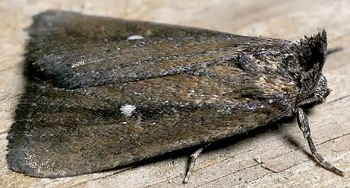
Condica videns (white-dotted groundling)
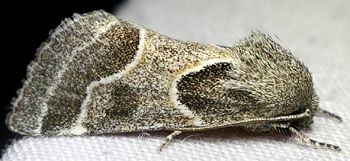
Schinia rivulosa (ragweed flower moth)
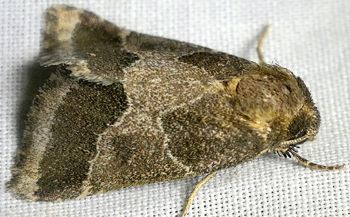
Schinia thoreaui (Thoreau's flower moth)
| Caterpillars of both Schinia species shown above feed on Giant Ragweed, which is growing in abundance right now. Good luck finding the larvae, though, as they are very well camouflaged. |
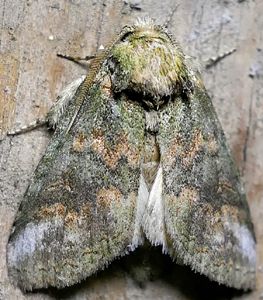
Heterocampa subrotata (small heterocampa moth)
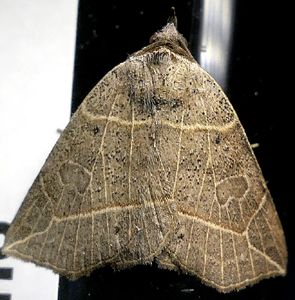
Isogona tenuis (thin-lined owlet moth)
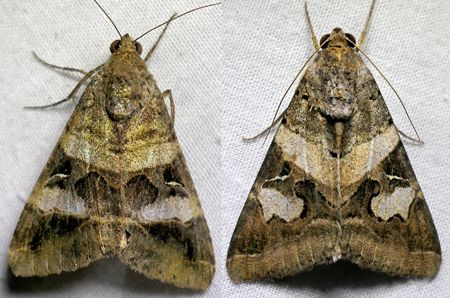
Melipotis perpendicularis & Melipotis indomita (moths)
| Closely related species are sometimes quite tricky to tell apart. Important clues for identification here include the shapes of the white spots and the dark marks between them. See? It's easy when you know what to look for. |
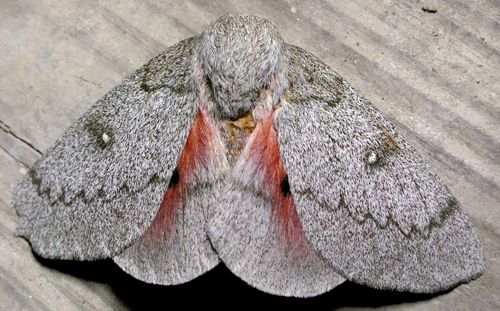
Syssphinx heiligbrodti (moth)
| Adult moths in the family Saturniidae, such as this one with no common name, have only vestigial mouthparts and lack digestive systems. They therefore cannot feed and only live a few days after emerging from their pupae. |
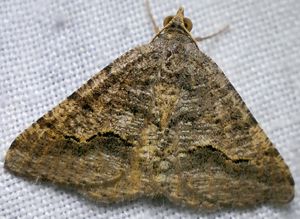
Rindgea cyda (mesquite looper moth)
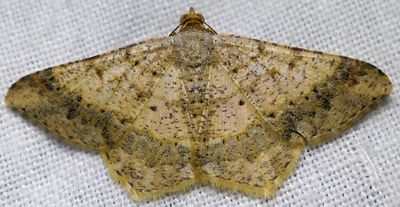
Psamatodes abydata (dot-lined angle)
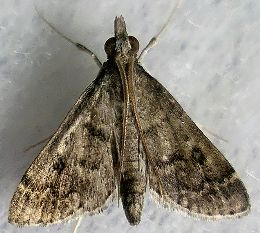
Loxostegopsis xanthocrypta (moth)

Aethiophysa invisalis (moth)
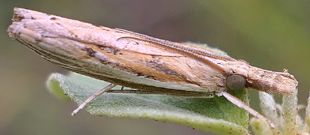
Fissicrambus sp. (grass-veneer moth)
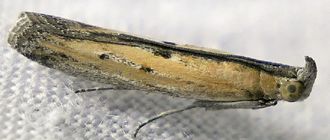
Elasmopalpus lignosellus (lesser cornstalk borer moth)
| A number of moths in two families (Pyralidae and Crambidae) tend to rest motionless on thin plant stems with their wings rolled tightly against their bodies, mimicking a dry leaf or broken extension of the vegetation. If they have no other more specific name, they are called "grass-veneer" moths. |
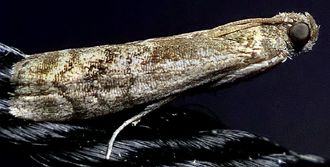
Euzophera semifuneralis (American plum borer moth)

Ecdytolopha mana (leafroller moth)

Pelochrista consobrinana (leafroller moth)
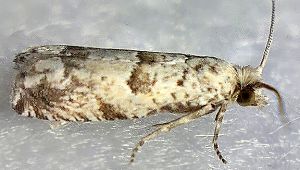
Pelochrista persolita (leafroller moth)
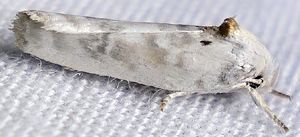
Antaeotricha leucillana (pale gray bird-dropping moth)

Inga cretacea (chalky inga)
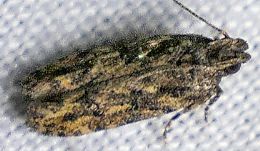
Hypatima zesticopa (moth)
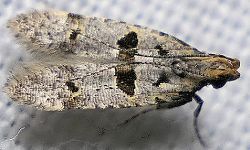
Deltophora glandiferella (moth)
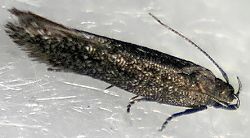
Aproaerema palpilineella (leafroller moth)
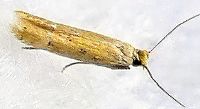
Astrotischeria sp. (trumpet leafminer moth)
| Members of the family Tischeriidae generally make larval leaf mines that are trumpet-shaped, but those in this genus actually produce more of a blotch mine. The host plant is most likely a composite, and the caterpillar feeds between the leaf surfaces, scouring out the cells. After pupating, the 4 mm long adult emerges. |

Agrocybe pediades (common fieldcap)
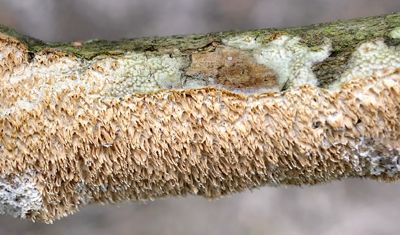
Hymenochaetopsis olivacea (fungus)
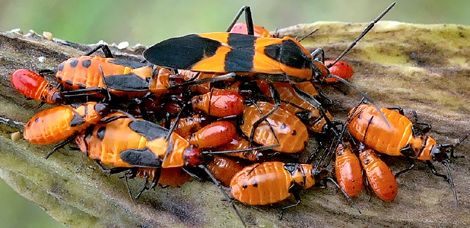
Oncopeltus fasciatus (large milkweed bugs)
| Bright hues meant to deter predators are called aposematic coloration. While a single insect benefits from such a warning, a whole group sends an even stronger message: these bugs are feeding on toxin-laden milkweed juice. |
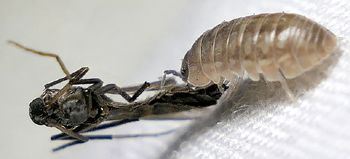
Armadillidium vulgare (pillbug eating fly)
| Finding an animal feeding on a carcass does not necessarily mean it is a predator. While some, such as the ants shown below, do hunt and kill prey, the pillbug shown above is simply an opportunistic scavenger that will feast on any edible debris it encounters. |

Solenopsis invicta & Unknown sp.
(imported fire ants attacking moth larva)
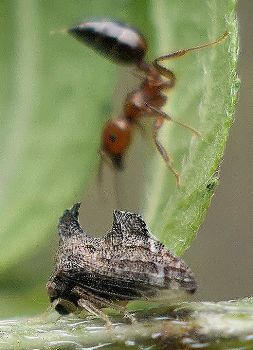
Entylia carinata & Crematogaster laeviuscula
(treehopper protected by acrobat ant)
| There are actually two protective insects here: the treehopper is a female that remains with her eggs, laid in the leaf vein, while the ant is guarding the treehopper as a source of sweet honeydew. |

Acanalonia parva (planthopper)

Tinobregmus vittatus (leafhopper)
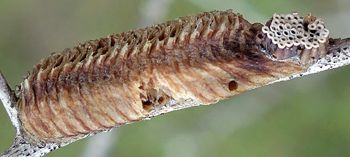
Stagmomantis carolina & Unknown sp. (Carolina mantis & assassin bug eggs)
| It is unusual to find two insect egg clusters together like this. Both are old, and it is not obvious if they were even laid around the same time, though the bug eggs certainly were deposited after the mantis ootheca hardened. It appears some eggs of both hatched, while others were predated or parasitized. |
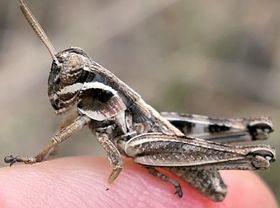
Melanoplus plebejus (plebeian grasshopper nymph)
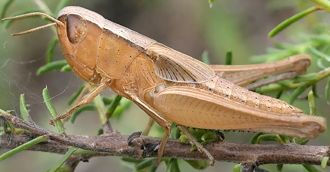
Amblytropidia mysteca (brown winter grasshopper nymph)

Orphulella pelidna (spotted-wing grasshopper)
| Many grasshopper species are quite variable in coloration, a feature which benefits them in different habitats. The rather plain tan and brown hues on this individual are a bit unusual for a species that more often has obvious spots, but there is no denying that the camouflage works! |
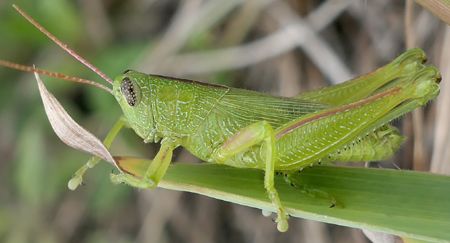
Hesperotettix speciosus (showy grasshopper)
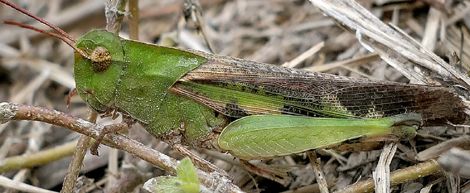
Chortophaga viridifasciata (northern green-striped grasshopper)
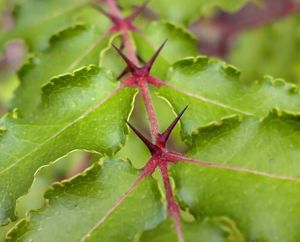
Zanthoxylum hirsutum (Texas prickly ash)
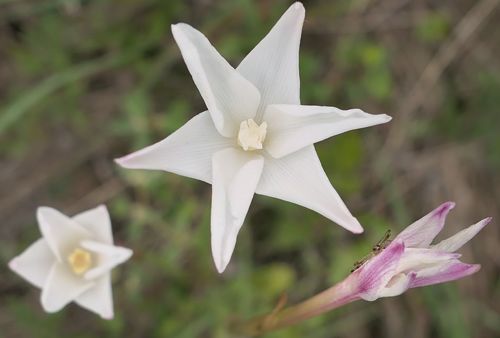
Zephyranthes drummondii (Hill Country rain lily)

Capsicum annuum (chile pequin)
| A high concentration of capsaicin makes these peppers more resistant to fungal, insect and mammal damage, while the red color entices birds. Passage through an avian digestive system has little effect on germination and birds are excellent at dispersing seeds into the partial shade habitats in which the plants thrive. |

Phyllanthus polygonoides (smartweed leafflower)
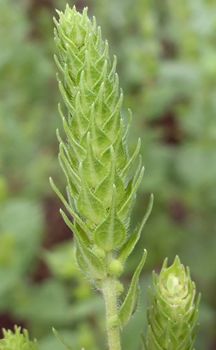
Iva annua (sumpweed)
| Around 5000 to 4000 years ago, this became one of the first cultivated plants in North America. However, it produces allergenic pollen and has a strong odor, objectionable qualities that led to it being superseded by more desirable plants such as maize. |
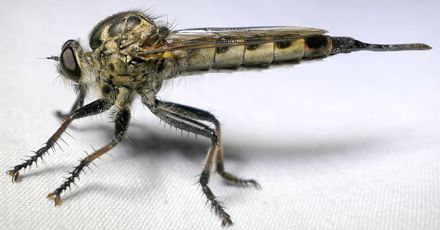
Efferia sp. (robber fly)
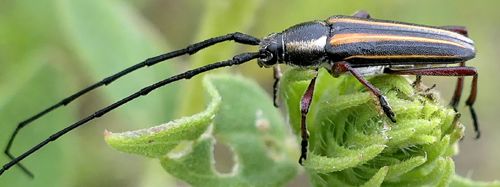
Sphaenothecus bivittata (longhorn beetle)

Lignyodes helvolus (ash seed weevil)

Araneus detrimentosus (orbweaver)

Philodromus pratariae (running crab spider)
| All species in the family Philodromidae have a very distinctive characteristic that sets them apart from other spiders: the second pair of legs are longer than the first. |

Rabidosa rabida (rabid wolf spider with egg sac)
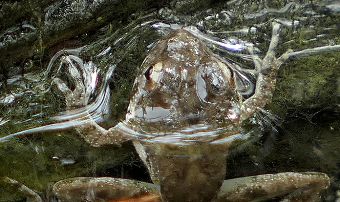
Acris crepitans (cricket frog)

![]()